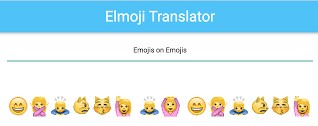Welcome to the age of emojis, where a single character can express more than words ever could. From simple smiley faces to intricate symbols, these tiny digital images have become an integral part of our everyday communication. But what if we told you that emojis hold even more power than meets the eye? In this comprehensive guide, we will unlock the secrets of converting emojis into a translator, enabling you to go beyond their surface meaning and unleash their true potential. Get ready to dive into a world where emojis are not just playful icons but powerful tools for expression and understanding. Let’s embark on this exciting journey together as we explore how to harness the transformative power of emojis like never before!
What are Emojis?
Emojis are small digital images or icons used to express a concept, emotion, or feeling in electronic communication. Originally used in Japanese mobile phones, emojis have become popular worldwide as a way to add personality and emotional nuance to text-based communication.
While some emojis are specific to certain cultures or countries, many are universally understood. For example, the “smiling face with heart-shaped eyes” emoji is often used to express affection or appreciation, while the “crying face” emoji is generally used to convey sadness or disappointment.
Converting emojis to translator can be a great way to add extra meaning and dimension to your translations. When used judiciously, emojis can help convey the tone and intention of your message in a way that words alone might not be able to do.
How to Convert Emojis into Translator
As anyone who has used a smartphone or other mobile device knows, emojis have become an integral part of our lives. They are fun, expressive and often convey meaning better than words alone. But did you know that you can convert emojis into translator?
Yes, there are now emoji translation apps that allow you to take an emoji and instantly translate it into another language. This can be very useful when communicating with someone who speaks a different language, or when you want to use an emoji in a context where it may not be immediately clear what it means.
There are a few different ways to convert emojis into translator. One option is to use an online tool like Emoji Translate (emojitranslate.com). This website allows you to type in an emoji and see how it would look in different languages. For example, the smiley face emoji looks like this in English: 🙂 but in French it looks like this: 🙂 . So if you were sending a text message to someone in France and wanted to use the smiley face emoji, you could use Emoji Translate to find out what it would look like in French before sending it.
Another option is to download an app that provides emoji translation services. There are several of these available for both iPhone and Android devices. Once installed, you can usually just copy and paste the emoji into the app and it will return the translated version. Some of these apps also allow you to
Benefits of Using Emojis in Conversations
Emojis can add a lot of personality to your conversations and make them more fun. They can also help you better communicate your emotions and intent. Here are some of the benefits of using emojis in your conversations:
1. Emojis can help you better express your emotions.
If you’re struggling to find the right words to express how you’re feeling, emojis can be a great way to convey your emotions. Whether you’re feeling happy, sad, angry, or anything in between, there’s an emoji that can help communicate your feelings.
2. Emojis can make your conversations more fun.
If you’re looking to add some fun and personality to your conversations, emojis are a great way to do it. They can help liven up even the most mundane exchanges and make them more enjoyable for everyone involved.
3. Emojis can help reduce misunderstandings.
Because they provide nonverbal cues, emojis can help reduce the likelihood of miscommunication in conversations. For example, if you send a message with a smiley face emoji, it’s less likely that the recipient will interpret the message as being sarcastic or rude than if you had just sent the message without an emoji.
Best Practices for Choosing the Right Emoji
When it comes to choosing the right emoji, there are a few best practices to keep in mind. First and foremost, consider the context in which you’ll be using the emoji. What message are you trying to communicate, and what will the emoji add to that message?
Next, take into account the tone of your message. Are you trying to be playful or serious? The tone of your emoji should match the tone of your message.
Keep in mind that not all emojis are created equal. Some emojis are more widely recognized and understood than others. When in doubt, err on the side of caution and choose an emoji that is less likely to be misinterpreted.
How to Use Emojis Effectively
If you’re like most people, you probably use emojis all the time in your text messages and social media posts. But did you know that you can also use them in your translations?
There are a few things to keep in mind when using emojis in your translations. First, make sure that the meaning of the emoji is clear. For example, if you’re translating a message into Spanish, use the Spanish word for the emoji (such as “cara sonriente” for “smiling face”) rather than the English word (“smiley”).
Second, keep in mind that not all cultures use emojis in the same way. In some cultures, emojis are seen as informal or even childish, so using them in a business context may not be appropriate. In other cultures, emojis are more commonly used and are seen as a way to add personality to a message.
Don’t overdo it with the emojis! Using too many emojis in a translation can make it difficult to read and understand. A good rule of thumb is to use no more than one emoji per sentence.
By following these tips, you can effectively use emojis in your translations and ensure that your message is communicated clearly.
Alternatives to Using Emojis
If you’re not interested in using emojis, there are a few alternative ways to communicate with your translator. You can use regular text-based communication methods, such as email or instant messaging. You can also use voice-based communication methods, such as telephone or video conferencing.
Conclusion
As we have seen, emojis are a powerful tool for communicating and expressing yourself without words. With the right tools, you can easily convert these symbols into real language that everyone will understand. By unlocking the power of emojis, you will be able to communicate with anyone in any language while also showing your personality through these fun symbols. So why not give this method of communication a try and see what kind of conversations it can spark!
Read more articles!













